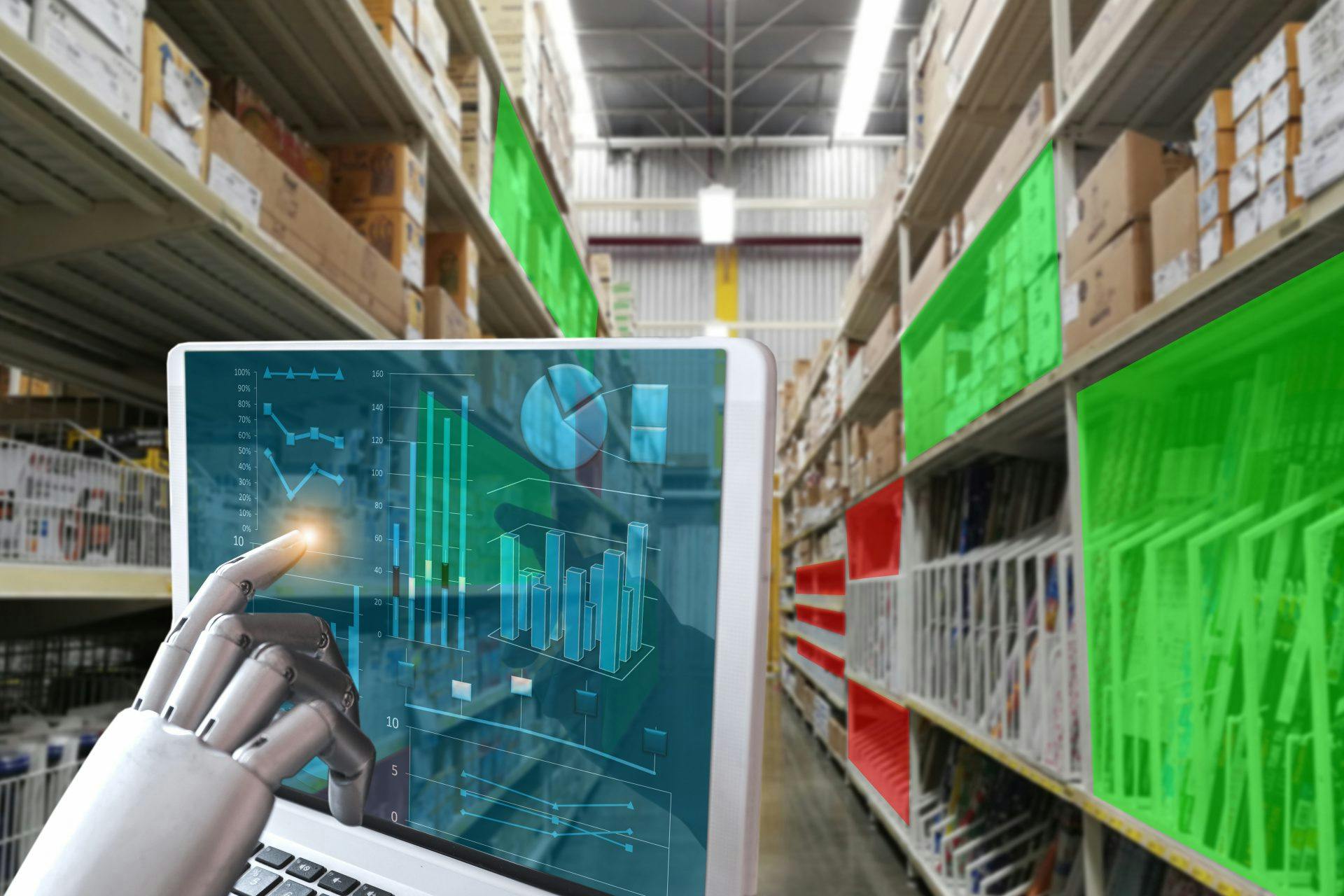Leveraging Big Data in Manufacturing Supply Chains
Manufacturing companies can improve planning productivity by more than 50% and enhance sales profitability by 6%+ when they make data-driven decisions.
Learn how to use three types of analytics to improve critical supply chain decision-making and save time and money.
Data is everywhere, but how do you use it to drive profits? What does it take to gain efficiency improvements through analytics?
This E-Book offers a practical approach to mining your data to achieve a more effective supply chain. Your journey starts with 2 steps:
- Supply chain visibility: Implement descriptive analytics to understand your performance over time.
- Analytics-driven improvements: Adopt advanced solutions using predictive and prescription analytics for proactive decision-making.
Want to deepen your understanding of advanced load building and order optimization? Explore our E-Guide "Carton, Pallet, and Load Optimization: Business Scenarios and Benefits", and streamline your warehousing, reduce costs and improve sustainability.

What Can I Expect from Reading This E-Book
Discover tips, tools, and examples of applying big data and smart analytics to achieve operational improvements in manufacturing environments.
The e-book outlines 4 different types of analysis you can implement to start gaining supply chain visibility, including:
- Performance analysis
- Data quality analysis
- Customer analytics
- Least touch analysis
It will also take you through useful examples of big data in action, such as:
- Understanding your cost to serve
- Planned vs realized analysis
- Predictive maintenance
Discover how you can tap into your own analytics tools and environment, and how ORTEC's Data and Analytics can help you improve decision-making.
Take the next step
Want to learn how to use analytics to improve critical supply chain decision-making and save time and money in your organization?
E-Book: 7 Ways Manufacturers can leverage Big Data in their Supply Chain
Discover the Secrets to Save Time and Money.
Contents

The Numbers Don’t Lie
Benefits
- Reduce planning time
- Bridge the gap between planning and execution
- Reduce number of trucks on the road
- More stackable products
- Reduce carbon footprint
- Increase discount bracket pricing
- More accountability for customers hitting discount bracket pricing

generated by analytics
in planning productivity
considered or have started a data driven culture
of trucks on the road
Visibility & Analytics-Driven Improvements
What Do You Want to Achieve?
The answer is simple: Efficiency. Achieving efficiency requires visibility into operations and analytics-driven improvements. These are closely tied to the Analytics Maturity curve by Davenport: This theory focuses on moving from descriptive analytics with utilizing your data to understand past and current performance, toward predictive and prescriptive analytics by combining your data with mathematics for useful decision making.
- Supply Chain Visibility
Achieving visibility requires a shift from reactive to proactive decision making. It focuses on using historic data (like stock replenishment, historic routes and deliveries) to understand what is happening, performance over time, learning from it and identifying improvement areas. This is also called descriptive analytics. Examples of standard descriptive analytics include performance analysis, driver scorecards and driver incentive programs, customer scorecards, and data quality analysis. - Analytics-Driven Improvements
Analytics-Driven Improvements use more advanced analytics solutions to support proactive decision making. The process uses historic data with machine learning and optimization models to predict, analyze and compare future scenarios, and make quantified decisions. This is also called predictive and prescriptive analytics. Examples of standard predictive and prescriptive analytics include Asset Analysis, Planned vs. Realized Analysis, and Cost to Serve – Customer Profitability Analysis.
Four Ways to Achieve Visibility & Analytics-Driven Improvements
Many manufacturing companies need visibility and analytics driven improvements to be more efficient to achieve success. Below are four examples of analytics solutions that can enhance visibility into your supply chain.
1. Performance Analysis (see dashboard below)
Evaluate the metrics that are important to you. For instance, weight utilization, volume utilization, pallets per day, stock vs. pick pallets and on-time-in-full deliveries. Analyze performance over time, compare specific days, periods, departments and customers. The interactive analysis shows a snapshot of your current and past performance. Zoom in and drill down to the detailed information of activities and actions, supporting more detailed analysis and to identify improvement areas.
2. Data Quality Analysis
A common reason to not start with data analytics is poor data quality. For instance, incorrect realizations of start time, finish time or delivered volume. Data analytics is a great way to tackle this and speed up the time to improve your data quality. Visualizations can support showing current data quality and identify improvement areas. Data preprocessing supports in cleaning your data and enables you to retrieve insights from the information.
3. Customer Analytics
The Customer Analytics solution focuses on understanding and quantifying customer demand and order patterns. For example, it looks at a customer’s activity on volume, frequency, utilization, lead times, and planned vs. realized delivery volume to gain operational visibility and how it can be enhanced with these metrics. Next to this, customers can be categorized and segmented based on demand volume, variability and predictability. At a final stage, customer activity can be quantified to support “what-if” analysis and understand the impact and opportunity of changing customer activity.
4. Least Touch Analysis
Least Touch Analysis supports identifying where manual or systematic adjustments of orders are occurring and why this is happening. The analysis brings visibility into touch points per region, lane, period, shipment and product. It evaluates the relation between manual adjustments and set constraints. Machine learning models are used to find and quantify patterns. Understanding where and why of touch points helps in reducing manual and repeat tasks, leading to time savings, reduction in errors and cost efficiencies.
Three More Ways to Achieve Visibility & Analytics-Driven Improvements
5. Cost to Serve – Customer Profitability Analysis
ORTEC’s Cost to Serve solution determines the cost and profitability of serving customers. With a machine learning model and an allocation algorithm, supply chain costs are allocated toward individual customers. The solution accounts for all relevant factors impacting costs, such as volume delivered, distance from the pick-up location, proximity to other customers within the route, vehicle utilization, and time windows. The results enable your company to understand, compare, and analyze cost and profitability on a detailed customer level. Sensitivity analysis shows the impact of decisions and the effect of frequency, order size, distance, duration, and capacity on costs and profitability. A similar type of analysis can be executed on a product/SKU level.
6. Planned vs. Realized Analysis
The solution focuses on understanding possible gaps between planned and realized shipments, volume, products and duration. Visibility supports to identify and quantify the gap. A machine learning model supports to identify the impact of specific customer and product characteristics, and provides the possibility to estimate realizations per scenario. The results can help you improve planning information, such that planning better matches reality to allow for better decision making.
7. Predictive Maintenance
The Predictive Maintenance solution evaluates historic equipment data with maintenance activities. Using machine learning models, an understanding of “normal” and “anomalous” operating data is identified. Based on these findings, the model can identify anomalous behavior of equipment measurements to indicate the need of possible maintenance activities - resulting in proactive scheduling of maintenance activities and ensures complete visibility of equipment status.
Tips & Tools: How to Enable Data-Driven Decision Making
Here are some tips & tools that best-in-class companies use.
Tips
- Tap into your own analytics tools and environment. Work with analytics experts to enable data analytics solutions in your own environment. The experts can help make use of your already existing data infrastructure and visualization tooling. They can also expand your analytics environment by adding new analytics models and logic.
- Use ORTEC DnA, a cloud-based portal enabling access to analytics solutions (see image below and screenshots on Pages 4, 5 and 6). You can integrate and process data, translate data using analytics models into relevant information and visualize the results to make decisions based on the findings. The portal is hosted on Microsoft Azure, which makes it scalable, reliable and suitable for different organizations. It consists of apps, resources, workflows and reports.
Tools
- Apps: This technology separates different analytics solutions. With the DnA license, multiple analytics solutions can be created and accessed in individual apps.
- Resources: Gives the data sources in DnA, which are saved in a Microsoft Azure environment. Interface your data with DnA and utilize analytics models to translate your data to valuable information.
- Workflows: Run and schedule analytics scripts. Workflows consist of logic/analytics/mathematics to perform data preprocessing activities and execute advanced analytics models.
- Reports: Offers interactive dashboards containing the output information. This area is used by the end user to investigate the results of the analysis.
Conclusion
We all have a lot of data and can gain a lot of value when using this data effectively. The examples in this E-Book showed you how to use data analytics to drive supply chain efficiency. No matter how mature your organization, a step-by-step process can move you to the next level. Embrace your data and start creating value!
Why ORTEC?
For 40 years, ORTEC has been a global leader in advanced planning and execution for load and route optimization. Over 1,200 leading companies rely on ORTEC to fully optimize fleet routing and dispatch, vehicle and pallet loading, workforce scheduling, delivery forecasting, logistics network planning, and warehouse control. We offer stand-alone, custom-made and SAP® certified and embedded solutions.